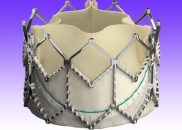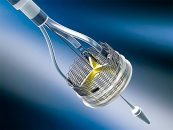Delayed high-grade block after transcatheter aortic valve replacement (TAVR) goes unnoticed in patients undergoing TAVR without prior conduction disorders because, most times, it takes place during hospitalization or immediately after the procedure. Right bundle branch block is a risk factor, but it has poor sensitivity for the prediction of high-grade blocks, and there may be…
Post TAVR New Onset Left Bundle Branch Block at Long Term: Worth Our Attention?
After post TAVR mean 3-year follow-up, a new onset persistent left bundle branch block (LBBB) was not associated with higher mortality or hospitalization for cardiac failure according to this study to be published soon in J Am Coll Cardiol Intv. Nevertheless, LBBB was associated to higher risk of definite pacemaker and a negative impact in…
Good News at 3 Years for “Valve-in-Valve”
In this new era, the paradigm to treat the whole spectrum of transcatheter aortic valve replacement (TAVR) patients has started to shift beyond risk. However, broadening the spectrum raises the question of durability, which is why any long-term TAVR outcomes in any context are welcome. This specific study studied TAVR durability in the treatment of…
EuroPCR 2019 | Most Recent TAVR Meta-Analysis: The Spectrum of Treatment Reaches All Patients
This new meta-analysis combines all randomized transcatheter aortic valve replacement (TAVR) vs. surgical aortic valve replacement trials and expands the scope of TAVR. Evidence across the range of risk studied supports a paradigm shift in patients with symptomatic severe aortic stenosis. The clinical superiority of TAVR compared with surgery has been demonstrated across the spectrum…
EuroPCR 2019 | Leaflex: New Device for Pre-TAVR Calcium Fracture
Researchers behind this small study believe that fracturing the rigid calcium deposits on leaflets with this new device could delay the need for transcatheter aortic valve replacement (TAVR) or facilitate it. This device showed actual improvement of leaflet mobility together with mean gradient reduction. The Leaflex Performer system (Pi-Cardia) was used in 16 patients with…
EuroPCR 2019 | TAVR Durability Offers Certain Guarantees at 8 and 10 Years
It has been 3 years since EuroPCR 2016 and the presentation of the first data on possible transcatheter valve degeneration, which sparked fear regarding the possibility that transcatherter aortic valve replacement (TAVR) devices might degrade earlier than expected due to the pressure put on them to introduce them into the delivery catheter. At EuroPCR 2019,…
EuroPCR 2019 | Long-Term Follow-Up for New Left Bundle Branch Block After TAVR Is Reassuring with Certain Precautions
Long-term follow-up of patients who underwent transcatheter aortic valve replacement (TAVR) and developed left bundle branch block (LBBB) after the procedure seems reassuring. Although it is not benign, it is associated with more conduction defects, more pacemakers, and worsening ventricular function. Long-term follow-up “partially reassures” the concerns of many physicians about new LBBB after TAVR.…
Lotus Returns with New Strength and the FDA Approval to Compete with Sapien3 and CoreValve Evolut R
After reports of some serious adverse events with first-generation Lotus, the device was pulled off the market—but it was not meant to be left in oblivion. Now, it is back, renewed and with the approval of the United States Food and Drug Administration (FDA), to compete directly with the two market leaders (Sapien and CoreValve),…
TAVR Learning Curve and Volume-Outcomes Relationship Plateau
Every operator keeps track of their cases. Have they reached their potential or are they still learning and improving their technique? After 1000 procedures, can we expect them to have better results than someone that has only done 500? Prior studies have reached conflictive results and consequently the relationship between learning curve and volume-outcomes remains…
Modern Valves Reduce the Need for a Pacemaker
Courtesy of Dr. Carlos Fava. Transcatheter aortic valve replacement (TAVR) has already demonstrated benefit for different risk groups, but one of the remaining challenges is the reduction of the need for a pacemaker, which is still high for self-expanding valves compared with expandable balloons. The study enrolled 203 patients with severe aortic stenosis who underwent TAVR with…









